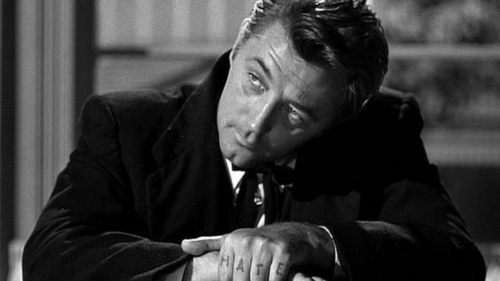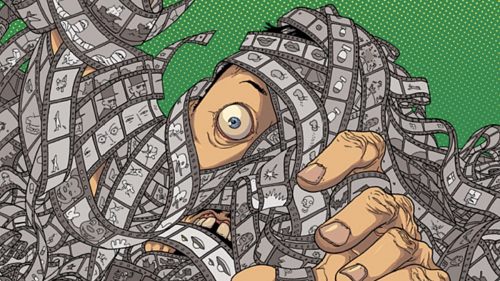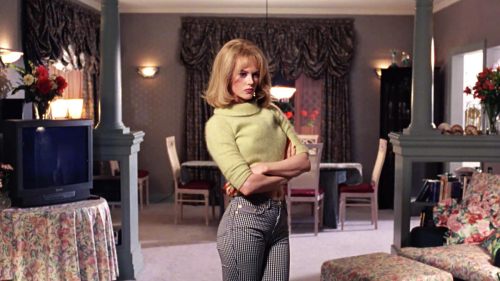Cover to Credits: THE TALENTED MR. RIPLEY
"The book was better" is a phrase heard often in conversations about book-to-film adaptations. "Don't judge a book by its movie" is another common jab. While we've all uttered some version of this sentiment at one point or another, there have been those rare occasions when the opposite is true. As a lifelong bookworm and cinephile, I've discovered that whether I read the book before or after seeing the movie can have a profound influence on my enjoyment of the story across both mediums. In this column, I’ll be checking out old and new adaptations to further explore both sides of that experience. In the process, I hope to unveil how these two vastly different mediums work together to tell the same story, from cover to credits.
---
“His stories were good because he imagined them intensely, so intensely that he came to believe them.”
- Patricia Highsmith, The Talented Mr. Ripley
It’s a remarkable talent when a writer can not only make you care about a murdering sociopath, but have you rooting for him in the end. It’s a talent Patricia Highsmith maintained over four decades and five novels featuring her most memorable amoral character – the cool and calculating Tom Ripley. Perhaps her most brilliant move was not revealing much detail about Ripley’s past, generating an air of mystery around him that invites perpetual analysis of why he is the way he is and why he does the things he does. In The Talented Mr. Ripley, Highsmith never provides a blatant physical description of Tom, focusing instead on the self-deprecating ways in which he perceives himself: “He had always thought he had the world’s dullest face, a thoroughly forgettable face.” Introducing him as a sort of everyman who doesn’t leave much of an impression sets the scene for the events that follow, planting the seed of plausibility for him to take on the identity of someone else. Because the one thing we do know about Mr. Ripley is that he would kill to be somebody else.

Since the first novel arrived in 1955, Highsmith’s duplicitous character has been portrayed on screen by Alain Delon (Purple Noon, 1960), Dennis Hopper (The American Friend, 1977), John Malkovich (Ripley’s Game, 2002), and Barry Pepper (Ripley Under Ground, 2005). But it’s Matt Damon’s chilling portrayal in Anthony Minghella’s 1999 Academy Award nominated adaptation that captured Ripley’s appearance and mental instability in a way we hadn’t seen before. Although the suspenseful thriller follows Highsmith’s plot almost religiously, Minghella’s interpretation brings Ripley’s repressed homosexuality to the forefront. And while articulating his struggle with these feelings earns our sympathy, it alters the dynamic between him and Dickie Greenleaf (Jude Law) in a way that makes his character more piteous and irreproachable than Highsmith intended. Of course, I love the film, so this is more an observation than a criticism – a line I tread each time I examine a book-to-film adaptation. The bottom line is that it’s easy to focus on the similarities, but it’s the deviations that are often far more interesting.

It’s almost as if Highsmith has created a character too complex to be encapsulated in a single performance. Her Ripley is brilliant, methodical, and devious in his mission to insinuate himself into Dickie’s world. Yet, at the same time, beneath the surface lies no small amount of insecurity, repressed desire, and a tremendous need for love and acceptance. Her Ripley does everything in his power to hide that vulnerability, whereas the feature leans into that side of his personality and builds from there. Sure, Matt Damon brings an unstable yet endearing quality to the role, but, ultimately, we care for him not in spite of his crimes, as we do in the novel, but because of the way he’s victimized by Dickie. Jude Law is magnetic as the dapper bohemian playboy, so we get why Ripley and Marge (Gwyneth Paltrow) are drawn to him despite his cruel and manipulative tendencies. But by the time things do go south, we really can't blame Tom for wanting to bash the guy’s head in. What's interesting is that Dickie’s demise on screen isn’t so much premeditated as it is an act of passion, which is a huge departure from the book where Ripley is planning to steal his friend’s identity days before the murder: “The danger of it, even the inevitable temporariness of it which he vaguely realized, only made him more enthusiastic. He began to think of how.”

Only Ripley’s second homicide is committed in the heat of the moment, out of pure fear of being discovered. The murder of the crass and obnoxious Freddie Miles (played with sleazy ease by the late Philip Seymour Hoffman) when he stumbles upon Tom impersonating Dickie in Rome is one of the film’s more impeccable moments. Yet, in the book the most fascinating part of this sequence takes place in the hours before Tom disposes of Freddie's body in plain sight. Waiting for dark, he methodically arranges the scene of his apartment to corroborate the story he’ll later tell the police. But halfway through formulating this plan it becomes obvious that he'd have time to clean everything up before the police ever knocked at his door. So, why go through the motions of setting it up in the first place? It's a scene that perfectly illustrates the precise and painstaking mental process that is the Ripley way. It's only through the act of pretending something happened that he's able to make it real in his mind.

Undoubtedly, I could spend many essays dissecting the film’s deviations in regard to Ripley’s relationships with various characters. Marge, for instance, is much more congenial to him on screen, while the two are ruthlessly competitive and resigned to merely tolerating each other in the book. Then there are Minghella’s subplots, introducing the American socialite, Meredith Logue (Cate Blanchett), who falls in love with Tom believing that he’s Dickie. But it’s Peter Smith-Kingsley (Jack Davenport) who evolves the most, emerging from the background as an incarnation of the love and acceptance Tom yearns for in secret but continuously denies himself. All leading to the tragic end where the lonely Mr. Ripley must decide if he truly believes it’s “better to be a fake somebody than a real nobody.”

I’d seen The Talented Mr. Ripley numerous times before reading the novel, and it has always been one of those movies I can’t turn off when it’s on. But I must admit that I was taken aback by how much reading Highsmith's exquisite prose has changed my perception of the film. Since 1999, Minghella’s suspenseful vision and Damon’s devastating portrayal have been my ultimate Ripley without a single thought to how much they may have deviated from the character. And when it comes down to it, it doesn't matter, because every detail changed was met with another to make their interpretation of the character valid. Sure, there’s no plausible way Matt Damon could pass as Jude Law – I mean, this isn’t Gattaca – so it’s forgivable when a new detective is conveniently assigned to the case at just the right moment. But Highsmith's Ripley would surely take offense to the idea of getting away with anything by happenstance instead of by his own design. Regardless, the film successfully weaves together a riveting portrayal of the mysterious Tom Ripley. And with a new series in the works, it’s obvious that this fascinating character is destined to be studied and interpreted for many years to come.



